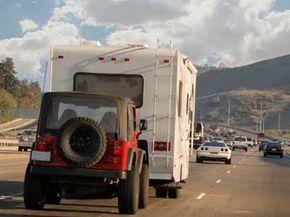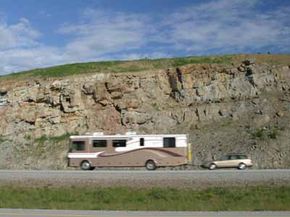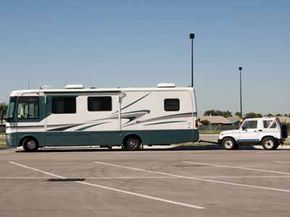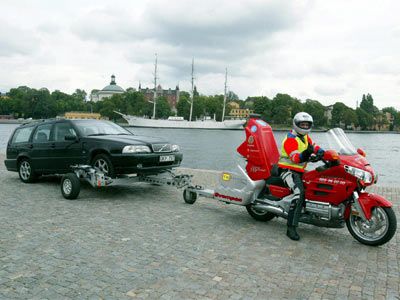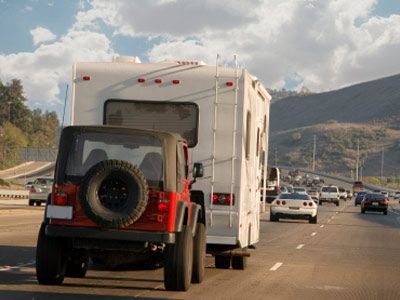It's common for RVers to back into their new mode of vacationing -- they likely already have a truck or car sitting in the driveway when they decide to purchase a motor home and join the ranks of recreational vehicle vacationers. If this family makes the common decision to tow a vehicle behind their RV, to use for errands and sightseeing during their trip, they often hit a snag.
This is because using the most popular system of towing an extra vehicle -- a tow bar attached to the hitch on the RV -- means that many makes and models of towed vehicles will need extra modifications. Considering the fact that our aforementioned family just dropped a huge chunk of change on their new RV, chances are good they'll contemplate modifying the vehicle they already own rather than heading back down to the dealer. Luckily, towing modifications can often be achieved with the purchase of a few pieces of additional equipment.
Advertisement
If the vehicle is a four-, rear- or all-wheel-drive, this usually means disconnecting or disengaging the drive shaft so the transmission doesn't overheat. Also, in the case of many vehicles with automatic transmissions, whether two-wheel-drive or otherwise, you can't just put the car in neutral, release the parking brake and get going -- this, too, would damage the vehicle's transmission in a big way.
This is where lube pumps come in. Towing pumps protect automatic vehicles' transmissions while people are traveling. On the next page, we'll take a closer look at just how the lube pump manages the feat.
Advertisement
